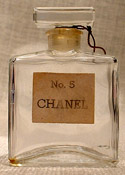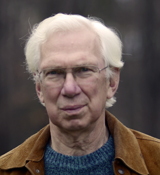Lightyears Collection
Chanel No. 5
(1921)
Chanel
Click on image to enlarge Chanel No.5 |
Much has been written about Chanel No. 5. Its origins are surrounded by myth and legend. What we do know with some assurance is this:
Coco Chanel
By 1920, Chanel had developed a successful couture business in Deauville. Her patron was a wealthy man and her clients were wealthy women. By all accounts her fashions were a major break from traditional fashions. The First World War had exiled many wealthy Parisians to Deauville and Chanel's new approach to fashion seemed to many more in keeping with the mood of the era than the stiff, traditional looks of her more established competitors.
Ernest Beaux
Unlike Chanel, Ernest Beaux was born into the privileged class. His father was the director of a major perfume and cosmetics house which had won numerous awards for the high quality of their products. With his father's retirement, Beaux — now a perfumer — took his father's position in the business, A. Rallet & Co. ... of Moscow.
After the 1917 Bolshevik coup, A. Rallet & Co. became "Soap and Perfume Works No. 7." Ernest Beaux relocated to Grasse, the capital of French perfumery.
Chanel No. 5
In 1920, Beaux and Chanel were introduced to each other, possibly through Chanel's young friend, Grand Duke Dimitri Pavlovitch, a Romanoff and, like Beaux, a Russian in exile.
Chanel, either on her own inspiration or through suggestions from a friend or friends, had developed an interest in offering her clients a perfume. She discussed this project with Beaux who agreed to prepare suitable samples.
Beaux's samples were presented to Chanel in numbered bottles. Chanel selected the bottle marked "No. 5". She subsequently announced that her fragrance would be called "No. 5", the "name" which already appeared on the bottle.
If you have any information you would like to share about the vintage of this bottle or about Chanel No. 5, please use the message sender below.
|


Philip Goutell
Lightyears, Inc.

